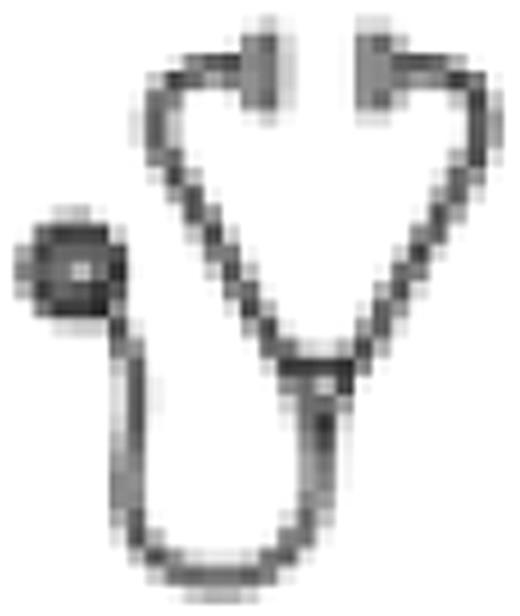Abstract
Abstract 414
The COG uses clinical characteristics, blast cytogenetic features and early response to therapy, as measured by bone marrow (BM) morphology on days 8, 15 and 29 and BM minimal residual disease (MRD) measured by flow cytometry in one of two central COG reference laboratories on day 29 of induction in order to modulate the intensity of post-induction therapy for children with ALL. A slow early response (SER) to therapy was defined by M2/M3 BM on day 15 or MRD ≥ 0.1% on day 29. The COG AALL0331 trial accrued 5377 children with NCI SR- ALL (age 1–10 years with an initial white blood cell count of <50,000/microliter) between 4/11/2005 and 5/28/2010. Induction therapy consisted of dexamethasone (6mg/m2/day × 28 days), PEG asparaginase (2500 units/m2 × 1), vincristine (1.5 mg/m2 weekly × 4) and intrathecal therapy (cytarabine on day 0 and methotrexate on days 8 and 29) according to age based dosing. Those patients with a day 29 M2 BM (5–25% blasts) or MRD ≥1% received two additional weeks of induction therapy using the same agents with one added dose of daunorubicin (25 mg/m2). Children with an M3 marrow (>25% blasts) on day 29, or an M2 marrow or MRD ≥1% on day 43 after 2 weeks of extended induction therapy were classified as induction failures. Following the first month of therapy, patients were assigned to different risk groups for post-induction therapy. We examined the correlations between clinical features, leukemic blast cytogenetic features (favorable: ETV6-RUNX1 and trisomies 4, 10, and 17 or unfavorable: MLL rearrangements, BCR-ABL1 and hypodiploidy), and response to induction therapy.
MRD at end induction was ≥ 0.1% more frequently in patients with the absence of either ETV6-RUNX1 (10.4% vs. 3.5%, P<0.0001) or trisomies 4, 10, and 17 (TT) (9.5% vs 5.9%, p=0.0001) or among those who harbored MLL rearrangements (26.1% vs. 8.5%, p=0.0004). MRD > 0.1% at end induction was seen in 23.3% of hypodiploid patients and 32.4% of Philadelphia chromosome + or BCR-ABL1 + patients. In addition, those who had an M2/M3 marrow at day 15 (36.7% vs. 5.9%, p <0.0001) were more likely to have MRD ≥ 0.1% at end induction. There was no difference in the proportion of boys and girls with MRD ≥0.1% (8.5% vs. 8.1%). Only 114/5082 (2.2%) children received extended induction. Induction failures were rare, occurring in only 37/5075 (0.7%) of patients. Induction failures defined by an M3 marrow on day 29 occurred in 6/5123 patients, while induction failures at day 43 after extended induction, occurred in 31/5067 (0.61%) patients (day 43 M2 marrow: 2, day 43 MRD ≥1%: 29). (see Table 1).
Inferior MRD responses were associated with the absence of favorable blast cytogenetics and slow initial responses (M2/3 marrow) on day 15 of induction consistent with the known prognostic significance of these variables. Overall, NCI SR patients on AALL0331 had a very low incidence of induction failures, as measured either by bone marrow morphology or by MRD≥1% at day 43. However, the use of MRD identified additional patients who had a suboptimal response to induction, allowing for early augmentation of therapy.
| . | Males vs females . | ETV6-RUNX1 vs not . | Triple trisomies vs not . | MLL vs not . | Day 8 BM-M1 vs M2/M3 . | Day 15 BM M2/M3 vs M1 . |
|---|---|---|---|---|---|---|
| Day 29 MRD + (≥0.1%) | 8.5% vs 8.1% (p=0.65) | 3.5% vs 10.4%(p<0.0001) | 5.9% vs 9.5%(p=0.0001) | 26.1% vs 8.5%(p=0.0004) | 2.9% vs 12.8%(p<0.0001) | 36.7% vs 5.9%(p<0.0001) |
| Required extended induction | 2.3% vs 2.2%(p=0.92) | 0.4% vs 3%(p<0.0001) | 1.3% vs 2.6%(p=0.007) | 13.3% vs 2.2% (p=0.0006) | 0.4% vs 3.8%(p<0.0001) | 14.6% vs 1.2%(p<0.0001) |
| Induction failure on day 29 | 0.1% vs 0.1%(p=0.69) | 0.1% vs 0.1%(p=0.67) | 0.2% vs 0.1%(p=0.65) | 0% vs 0.1%(p=1.0) | 0% vs 0.2%(p=0.037) | 1.6% vs 0%(p<0.0001) |
| Day 43 MRD ≥1.0% | 0.5% vs 0.6%(p=0.58) | 0.1% vs 0.8%(p=0.004) | 0% vs 0.8%(p=0.0006) | 0% vs 0.6%(p=1.0) | 0% vs 1.0%(p<0.0001) | 5.0% vs 0.2%(p<0.0001) |
| . | Males vs females . | ETV6-RUNX1 vs not . | Triple trisomies vs not . | MLL vs not . | Day 8 BM-M1 vs M2/M3 . | Day 15 BM M2/M3 vs M1 . |
|---|---|---|---|---|---|---|
| Day 29 MRD + (≥0.1%) | 8.5% vs 8.1% (p=0.65) | 3.5% vs 10.4%(p<0.0001) | 5.9% vs 9.5%(p=0.0001) | 26.1% vs 8.5%(p=0.0004) | 2.9% vs 12.8%(p<0.0001) | 36.7% vs 5.9%(p<0.0001) |
| Required extended induction | 2.3% vs 2.2%(p=0.92) | 0.4% vs 3%(p<0.0001) | 1.3% vs 2.6%(p=0.007) | 13.3% vs 2.2% (p=0.0006) | 0.4% vs 3.8%(p<0.0001) | 14.6% vs 1.2%(p<0.0001) |
| Induction failure on day 29 | 0.1% vs 0.1%(p=0.69) | 0.1% vs 0.1%(p=0.67) | 0.2% vs 0.1%(p=0.65) | 0% vs 0.1%(p=1.0) | 0% vs 0.2%(p=0.037) | 1.6% vs 0%(p<0.0001) |
| Day 43 MRD ≥1.0% | 0.5% vs 0.6%(p=0.58) | 0.1% vs 0.8%(p=0.004) | 0% vs 0.8%(p=0.0006) | 0% vs 0.6%(p=1.0) | 0% vs 1.0%(p<0.0001) | 5.0% vs 0.2%(p<0.0001) |
Borowitz:genzyme: Research Funding; becton-dickinson: Research Funding; Alexion: Consultancy; beckman-coulter: Research Funding. Mattano:pfizer: Employment.

This icon denotes an abstract that is clinically relevant.
Author notes
Asterisk with author names denotes non-ASH members.

This feature is available to Subscribers Only
Sign In or Create an Account Close Modal